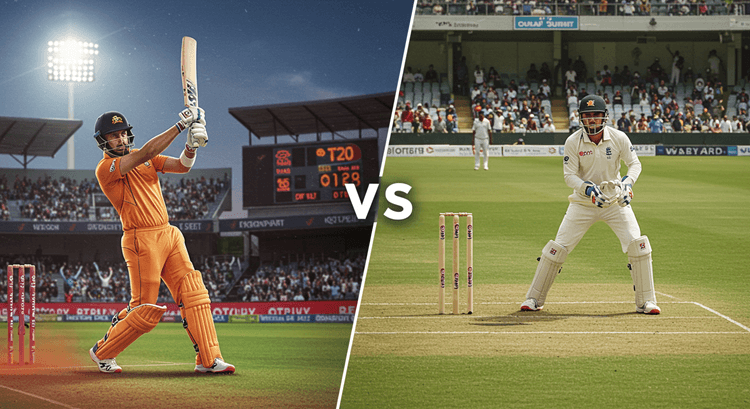T20 vs. Test Cricket: Which Format Truly Defines a Player’s Skill?
Cricket has evolved dramatically over the years, with different formats offering unique challenges and entertainment. Among these, Test cricket and T20 cricket stand as two contrasting formats that test a player’s ability in vastly different ways. While Test cricket is seen as the ultimate test of endurance and technique, T20 is often viewed as a fast-paced, entertainment-driven format. But which format truly defines a player’s skill? Let’s dive into the debate.
The Essence of Test Cricket
Test cricket, as the name suggests, is a true test of a player’s skills, temperament, and endurance. Lasting up to five days, it requires players to showcase their technical expertise, patience, and strategic thinking. Batsmen need solid defensive techniques, the ability to play long innings, and the mental fortitude to handle pressure over extended periods. Bowlers must exhibit stamina, precision, and the ability to exploit even the slightest weaknesses in the opposition’s game.
One of the most significant aspects of Test cricket is its unpredictability. Unlike shorter formats, where conditions often remain similar throughout, a Test match can see drastic changes in pitch behavior, weather conditions, and game dynamics. A true Test cricketer is someone who can adapt to these varying challenges, making it the most comprehensive assessment of a player’s skill set.
The Thrill of T20 Cricket
On the other hand, T20 cricket is all about speed, aggression, and adaptability. The format, which lasts around three hours, demands players to make quick decisions and execute their skills under intense pressure. Batsmen must have explosive hitting abilities, innovative shot-making, and the temperament to take risks. Bowlers, despite having limited overs, must be highly accurate, deceptive, and capable of handling relentless attacks from aggressive batsmen.
T20 cricket also puts fielding abilities in the spotlight. With quick run-scoring being the norm, fielders play a crucial role in saving runs, effecting run-outs, and taking stunning catches. The emphasis on fitness and athleticism in modern cricket is largely due to the high demands of T20 cricket.
Which Format Tests a Player More?
Determining which format truly defines a player’s skill depends on how one views cricketing ability. Test cricket demands patience, resilience, and technical mastery, while T20 cricket tests adaptability, innovation, and high-pressure execution.
Some argue that Test cricket is the pinnacle of the sport because it examines every aspect of a cricketer’s game over a prolonged period. Playing in different conditions, battling through long innings, and facing top-quality bowling over multiple sessions require exceptional skill and mental strength.
Conversely, others believe that T20 cricket is the ultimate challenge in today’s game. The ability to perform under immense pressure, score quickly against world-class bowlers, and deliver consistent performances in a limited time frame requires immense talent and composure.
The Best of Both Worlds
While Test cricket and T20 cricket may seem poles apart, the best cricketers in the world are those who excel in both formats. Players like Virat Kohli, Ben Stokes, Steve Smith, and Jasprit Bumrah have showcased their prowess in both Test and T20 cricket, proving that true skill is about adaptability.
Cricketing greats such as Sachin Tendulkar, M.S. Dhoni, and AB de Villiers have also demonstrated their ability to switch between formats seamlessly. Their success across formats highlights that the best cricketers are those who can master the patience and technique of Test cricket while embracing the dynamism and aggression of T20 cricket.
Conclusion
Ultimately, defining a player’s skill through one format alone is unfair. Both Test and T20 cricket challenge players in different ways and require distinct skill sets. While Test cricket remains the gold standard for assessing a player’s all-round abilities and longevity, T20 cricket has redefined modern cricket, pushing players to innovate and perform under extreme pressure.



Comments are closed.